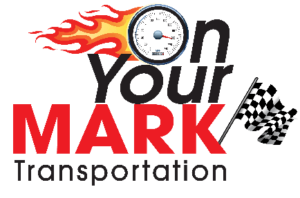“To Be, or Not to Be…” is not the question. “How big should my fleet be?” is far more relevant to profitability in our business.
Someone once said that he’d never seen any other industry that incurred so much debt to meet peak demand. The real goal is the delicate balance between maximizing utilization without passing up too many opportunities.
But how do you arrive at right size? Here are 4 key points to consider as you build your fleet.
1. Do your homework. To determine the best balance requires careful analysis of your sales and how many days each bus in your fleet is in use. Your business must also look at the revenue side. Running a bus at cost (or less) during slow times is insignificant to your bottom line, and exposes you to additional risk.
Many coaches have been bought to meet sudden “opportunities” that didn’t use the bus for enough days per year. Operators hoped to generate enough extra business to make it work. “Hope” is a risky marketing plan.
Even when the opportunity is year-round, it’s important to know how long it’s REALLY going to last. Real excitement is financing a coach for 7 years, and losing the contract after 3… just as the bus’s warranty runs out.
2. Watch your margins closely. Bus fleets are like cell phones… smaller is better. If you are a little bit too small, the only serious risk is that you’ll chase some business to a competitor. This pales in comparison to being too large.
If you have too many buses, and business slows, the first sacrifice is price. Trips are run for miniscule margins, often during the riskiest time of the year.
What happens next can be even uglier… customers are trained to expect cheap transportation. No amount of explanation about the seasonal nature of the charter business will ever quite convince them that they aren’t being gouged during peak periods. A certain amount of fluctuation is accepted, but when the spread gets big, operators lose either credibility… or profit.
3. Balance your debt. An ideal fleet has some buses that are paid for. When those beauties are sitting, it doesn’t cause too much heartburn, and they are available to seize opportunities that are real. An all-new fleet sounds good, but is UGLY when it’s parked. Many well-run companies have fleets that are a mix of new and older coaches. This mix should be determined by their mechanical skills and customer demands.
4. Invest in relationships with your suppliers. Conventional wisdom has been that you’re better off with a single brand of coach (even a single model). In recent years, a number of operators have decided to run two brands of coaches. Each approach has strengths worth considering.
Having a single model of coach simplifies maintenance, cuts parts inventory, and makes driver training simpler. It also keeps operations simple in terms of which bus to use for each trip. Different models, from the same manufacturer, still offer the advantage of a single relationship with parts and technical people. Often a manufacturer’s different models share components and a philosophy of maintenance that will serve you well.
There are a few downsides to a one vendor approach. Plants could be shut down by fire, flood and financial woes. A problem with one manufacturer would create a shortage, and the other builders would serve their existing customers first. A lengthy disruption could cause that brand’s resale value to plummet. Therefore, having two brands hedges your bet.
Your manufacturer is your partner. The relationship should be profitable and pleasant for both sides. If you only shop price, most manufacturers will lose interest. On the other hand, all are happy to sell to a company that maintains a real bond with 2 builders… rewarding the most responsive with a larger share of each order. They value, and compete for that kind of customer. When I was in sales, if you were buying from me… you should stick with the standardized fleet approach. If you’d been buying from the other guys… consider the 2-manufacturer plan. I could be at your place in an hour.
Each company’s situation is different, so the decision on size and makeup of your fleet is an individual one. Use these four key points to determine what will best serve your company long-term. If you need additional help determining the right mix for your team, reach out to On Your Mark Transportation for an outside perspective and analysis of your strategy.

